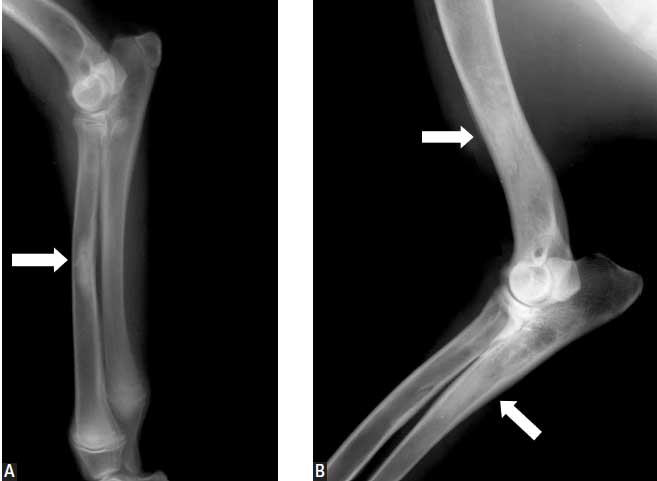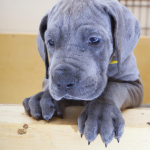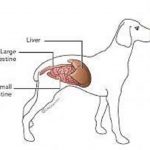Young growing dogs can have an interesting affliction called panosteitis. This occurs with inflammation to the bones, typically the leg bones (also referred to as “long bones”).
Panosteitis in dogs can be a very painful condition in dogs, usually large breed dogs, especially the German Shepherds, Goldens, Dobermans and Basset Hounds, but any breed can be affected.
The typical dog is a young growing dog between the ages of 5 and 18 months.
That said, German Shepherds have manifested this problem at over 2 years of age and some case reports show dogs as old as 5 years developing this condition.
But typically, it is a condition of the younger than 2 year old dog.
Diagnosis of panosteitis is relatively straight-forward as the first symptom noted is usually lameness of one or more legs.
But other conditions that cause shifting leg lameness such as tick-borne diseases need to also be ruled out.
Severity ranges from mild to so severe that the affected dog does not want to stand, becomes very lethargic, develops a fever and loses his/her appetite.
Painful episodes last two to five weeks typically but recur, often changing legs, until the puppy outgrows the condition. Some individuals experience a recurrence around age 2 years, but again the symptoms simply regress as before.
X-rays as well as pain on palpation of the long bones helps make the diagnosis. There is a slight predisposition of males over females, and while larger breeds are more usually affected, any breed potentially could develop this condition.

In panosteitis, characteristic cloudiness in the bone marrow (see the arrows) cavities is visible on radiographs (x-rays).
Radiographic signs lag 2-3 weeks behind the clinical onset of symptoms so if x-rays initially look normal, they can be repeated in a couple of weeks and the lesions will likely be more prominent.
If there is still any question of the diagnosis in a given patient, a nuclear medicine scan called scintigraphy will definitively settle the question, but this is rarely necessary.
What Causes Panosteitis?
What causes all this to happen in the first place is unclear and open to speculation. In the past, the condition was thought to be caused by a viral infection but more recently there is the theory that the high protein and high calcium dog foods is to blame.
The idea here is that protein accumulation in the bone marrow leads to swelling inside the bone. Because the bone is a rigid structure and cannot expand, pressure is exerted on the blood vessels leading to tissue death, inflammation and the panosteitis phenomenon. This is still just theory.
Since there is a breed predisposition for panosteitis (German shepherd dogs, Golden retrievers, Basset hounds, Doberman pinschers, and Labrador retrievers), this implies a genetic basis. The cause of panosteitis is still a matter of theory and investigation. No one really knows what causes it.
Treatment
As mentioned, the only treatment is pain relief until the dog outgrows the condition. For most dogs this means one of the anti-inflammatory pain relievers made for dogs. If this is not enough, combinations of pain management can be used. Ultimately, over time, the condition resolves.


